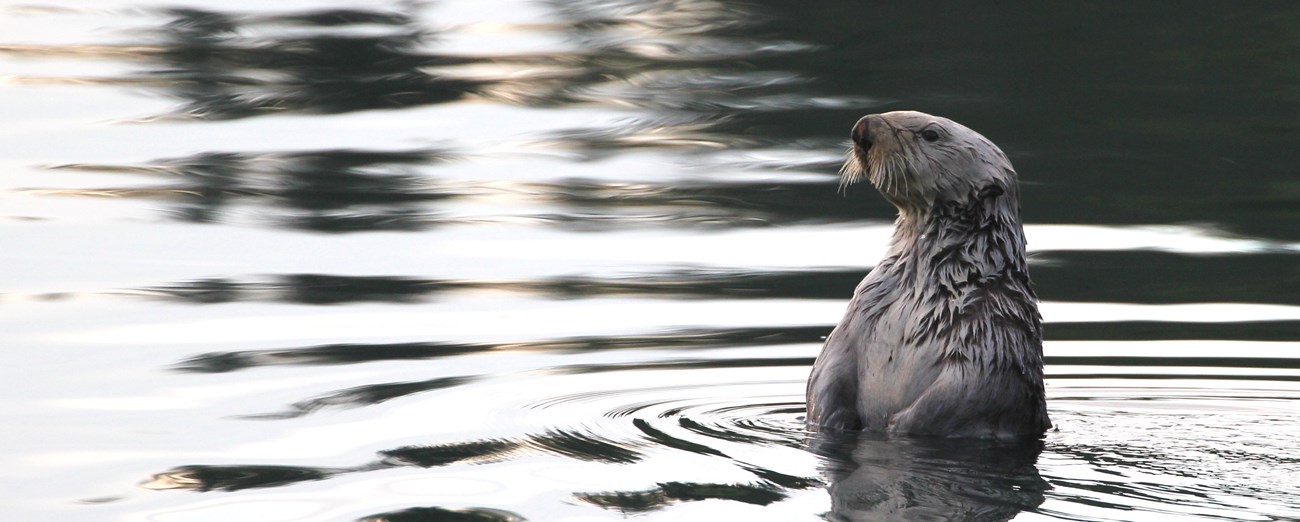
DecemberIn years of heavy snow, Sitka black-tailed deer are common in coastal forests and sometimes visit beaches to feed on kelp. Most months, deer tend to follow snow lines up and down mountainsides from the coastal forest fringe. When snow accumulates, they move into old-growth forest areas. Watch for them while traveling the Alaska Marine Highway.Moose have become more common in Southeast. Look for them in river basins where willow is abundant. Mountain goats move out of alpine tundra into old-growth forest areas. These lower elevations offer protection from weather during winter. Many water birds spend winter in the wetlands and marine waters of Southeast Alaska. In the southern islands, trumpeter swans, hooded mergansers, and American coots often occur in the few freshwater ponds and lakes that remain open in winter. Red-throated loons, horned grebes, Canada geese, mallards, green-winged teal, greater scaup, Barrow's goldeneyes, buffleheads, and surf scoters use coastal wetlands. The Vancouver subspecies of Canada goose are year-round residents. In winter, large flocks gather in coastal wetlands. Pacific wrens sing throughout the year. JanuaryMink, river otter, marten, and vole tracks are easy to find in the snow. Wolf, wolverine, and weasel tracks may also be found. Along rocky shores and coastal bays, look for common, red-throated, and yellow-billed loons, harlequin ducks, horned, red-necked, and western grebes, scoters, goldeneyes, and long-tailed ducks. Rock sandpipers and dunlins occur on rocky coasts throughout winter. Watch for pacific loons, common murres, and marbled murrelets in offshore waters. Murres, murrelets, and pigeon guillemots also occur in inshore waters and may be seen near Petersburg.FebruarySome killer and humpback whales remain in the sounds and straits of Southeast during the winter. Watch for them, and Dall's and harbor porpoise, along the Alaska Marine Highway and coastal vantage points.During winter, flocks of chestnut-backed chickadees, brown creepers, red-breasted nuthatches, and golden-crowned kinglets can often be found in old-growth forests. Watch for large flocks of red and white-winged crossbills and pine siskins feeding or flying among the tops of spruce trees. Common redpolls, chestnut-backed chickadees, Steller's jays, and downy woodpeckers can be easily attracted to bird feeders in this region. Bald eagles can be seen anywhere along the coast, throughout the year. |
Last updated: December 29, 2023
